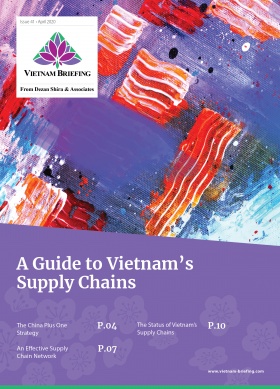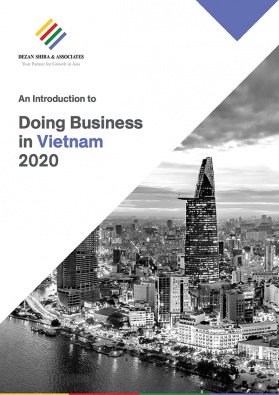Vietnam Shows Steady Signs of Progress in Global Innovation Index
- Vietnam ranked 42 out of 131 economies in the Global Innovation Index (GII) report, which measures countries’ innovative capacities, highly correlated with more efficient businesses and economic development.
- Vietnam made significant headways in recent years, but more needs to be done to compete with bigger economies in Southeast Asia.
- Vietnam Briefing provides context to the GII findings, discussing selected indicators in greater detail.
In its annual report released on September 2, 2020, the World Intellectual Property Organisation (WIPO) ranked Vietnam 42 out of 131 countries in the Global Innovation Index (GII). With a score of 37.12 out of 100, Vietnam is third in Southeast Asia behind Singapore and Malaysia, and ninth in the Asia-Pacific region as whole. However, the country is first amongst a group of 29 lower-middle income economies.
What does this say about Vietnam’s innovative capacities? We take a look at some of the implications for the country’s business environment and overall development trajectory.
What is the GII?
Developed by WIPO in collaboration with Cornell University and INSEAD, the GII ranks the innovation performance of countries around the world based on 80 indicators divided into seven pillars: institutions, human capital and research, infrastructure, market sophistication, business sophistication, knowledge and technology outputs, and creative outputs.
What are Vietnam’s strengths?
The GII report highlights market and business sophistication as areas where Vietnam excels, especially with regards to access to credit and microfinance gross loans.
Market sophistication refers to the availability of credit and an environment that supports investment, access to the international market, competition, and market scale – elements that are critical for prosperity and innovation.
Business sophistication assesses how conducive firms are to innovation activity through the accumulation of high-quality human capital and the prioritization of research activities that help businesses become more productive, competitive, and innovative.
How did Vietnam improve on these areas? The term “Enabling Government” has been a guiding principle for policy, which is reflected in efforts to align the country with international standards and best practices with the ultimate goal of creating a more favorable environment for business. Some supporting incentives include tax reductions or land rental schemes that target high-priority sectors such as tech and green energy.
Major multinational corporations have also set up research and development (R&D) centers in Vietnam, partly due to cost advantages associated with proximity to their manufacturing centers.
Vietnam also has a young, talented workforce with science and engineering backgrounds. However, Vietnam will need to commit more resources to scientific research and higher education if it hopes to take the lead on cutting-edge technological developments.
Due to Vietnam’s lead in high-technology and foreign direct investment (FDI) attraction, the country’s knowledge absorption and diffusion are two other areas of strength.
Mobile app creation, creative good exports, and trademarks by origins are a few creative output-related areas in which Vietnam performed well.
Vietnam ranked among the top 10 in terms of productivity growth and R&D expenditures financed by business and continues to make improvements in high- and medium-high-technology manufacturing. There were also notable improvements in innovation linkages, and access and use of information and communications technology (ICT) infrastructure. Telecommunications giant Viettel Telecom is first among the 33 Vietnamese brands that are in the top global 5,000.
Areas that need improvement
The GII report also pointed out areas where there is still a lot of room for improvement.
Tertiary inbound mobility is defined as the number of students from abroad studying in a given country as a percentage of total tertiary-level enrolment. This plays an important role in the exchange of ideas and skills that help spur innovation. Although Vietnam is home to a number of young talents, many of whom have studied abroad, it falls behind other bigger economies like Singapore in terms of attracting international students. Vietnam will need to make greater efforts at internationalizing its universities, for example by offering more English-taught classes.
While Vietnam ranks highly in terms of knowledge diffusion and high-tech net exports, labor productivity, which is measured as the growth in GDP per hour worked, remains a weak area.
Labour productivity is a critical factor in sustaining Vietnam’s growth performance and helping the country overcome the middle-income trap and move up in the supply chain. While the number increased by an average of 5 percent yearly since 2011, it is still low in comparison with other ASEAN countries.
This may be why Vietnam ranks lower in knowledge-intensive employment: the latter measures the number of managers, professions, and technicians as a percentage of total people employed. This is indicative of the degree of sophistication of local human capital currently employed.
For many years, Vietnam has relied on cheap labor and the low cost of raw materials to stay competitive. However, the government acknowledged that boosting labor productivity in industry, particularly in FDI projects and in leading small- and medium-sized enterprises, is of utmost importance.
Technology will no doubt play a big role in strategy. Vietnam’s high level of imports of communication, computer and innovation services (ICT services imports) as a percentage of trade indicates that there are still limits in local abilities and tools to process, share and store digital information.
The government has already committed to some ambitious plans to digitalize all aspects of society and invest in Industry 4.0 technologies. Although these initiatives may take time to bear fruit, the country is taking steps in the right direction.
About Us
Vietnam Briefing is produced by Dezan Shira & Associates. The firm assists foreign investors throughout Asia from offices across the world, including in Hanoi and Ho Chi Minh City. Readers may write to vietnam@dezshira.com for more support on doing business in Vietnam.
- Previous Article Trends und Möglichkeiten im Online-Gaming: Die vietnamesische Gaming-Industrie auf das nächste Level bringen
- Next Article Produktionsverlagerung nach Vietnam für US-Unternehmen: Was Sie wissen müssen







